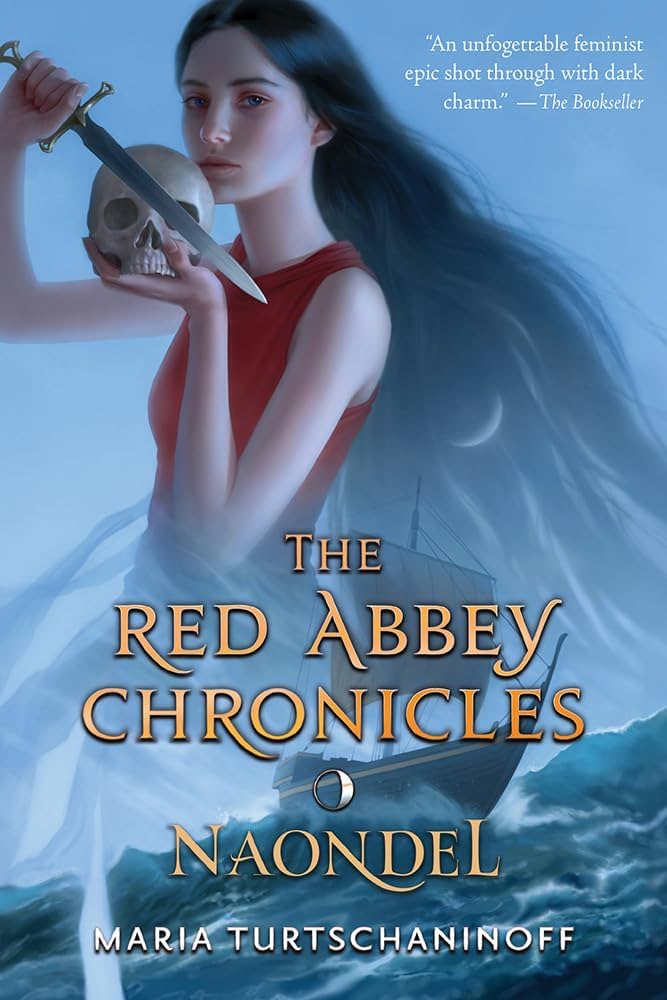Year published: 2016

Categories: YA, fantasy
LGBTQIA representation: F/F, perspective character and side character, intersex representation, side character
Summary: Imprisoned in a harem by a dangerous man with a dark magic that grants him power over life and death, the First Sisters must overcome their mistrust of one another in order to escape. But they can only do so at a great cost, both for those who leave and for those left behind. Told in alternating points of view, this novel is a vivid, riveting look at a world of oppression and exploitation, the mirror opposite of the idyllic Red Abbey.
My Thoughts: I liked this even more than Maresi, which I thought was great. It is by no means an easy book to get through, but I found it incredibly resonant. A while back, I described The Once and Future Witches as Charlotte Catnip, and you KNOW that this is more Charlotte Catnip – a book about diverse women with different attitudes towards their trauma and different ways of coping; they find their way out of captivity by overcoming their divisions, eventually becoming sisters, living in peace as survivors and creating a refuge for other women. It’s a powerful story of survivorhood told with a great deal of grace, thought, and beautiful language. I loved learning about the cultures that each of the women came from – they’re all extremely evocative and interesting, and it truly is a diverse group of women with different ethnicities, sexualities, magical abilities and more (such as disfiguration and intersex identity) that is all incorporated into the story with thought and care.
That being said, however, there are some definite flaws to the overall structure of the book that impact the story’s efficacy. Because they are the first women brought into Iskan’s harem, we get a great deal of characterization and narration dedicated to Kabira and Garai, but each woman gets progressively less and less time and depth as she is brought to the palace after that. I mentioned that there are amazing descriptions of different cultures, but this is really only true of Kabira, Garai and Orseola. Orseola and Sulani barely get any narration time after they are brought to the palace; Claras is the one who actually decides to escape, but we barely get to know anything about her or what brings her to this decision after she was the only woman who came to the palace willingly; Etstegi doesn’t even get a perspective for some reason, even though I think the book would have really been strengthened by the voice of a woman outside the harem. Speaking of voice, it’s also notable that the prose is pretty much the same for every woman’s narration, even though they have drastically different experiences and personalities.
The one real exception to this is Daera, whose voice is sweet and hopeful and optimistic; she is the last of the First Sisters and comes into existence during their flight from the palace. She embodies all of the joy and innocence that the other First Sisters were denied; she owns her body/sexuality and embraces her freedom. I think she’s a fascinating character.
Kabira has a great deal of the interiority that the others lack – we see her madness and despair and grim, numb acceptance after her loss of her family and her children, her complex relationship with her daughter Esiko, who she has in a final act of self-determination and resistance, her tentative friendship with Garai and her inability/unwillingness to care at all for the plight of the other women in the harem. I can only imagine how much more amazing Naondel would have been if each of the women had interiority to match hers, but at the same time, I just don’t know how feasible that would be.
Speaking of characters’ interiority, readers who like a villain with some amount of nuance or humanity won’t find that in Iskan. Except for the very beginning, he is nearly unequivocally monstrous and just grows more depraved and ruthless with time. I don’t know if this needs to be said but there is a LOT of rape in this book, and while it’s absolutely a story of trauma and survivorhood, I think the book could have been a little more varied and expressive with the women’s reactions to what happens to them – this happens to a certain extent, but I think more could have been done. This definitely stems back to the greater issue of juggling so many characters all at once. The pacing is fairly slow for most of the book but moves incredibly quickly at the end, but I’m not too bothered by this as I think it comes with the territory of telling a story about ongoing oppression and then escape.
It is far from technically perfect, as I’ve just outlined, but the story is such a powerful one that is told with such grace. Yes, I sat crying in an airport over the last few pages, and overall I know that this is one I’ll be thinking about for a long time.

Leave a comment